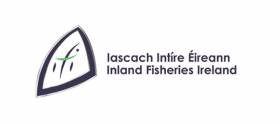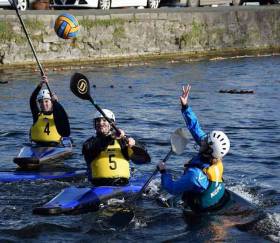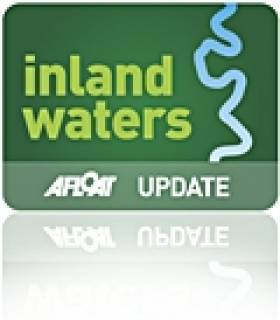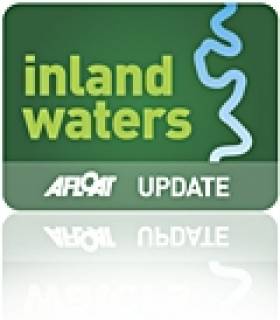Displaying items by tag: Kilcock
Inland Fisheries Ireland (IFI) says it has confirmed a significant fish kill on the Royal Canal in Kilcock, Co Kildare earlier this week.
A report was received on Monday 1 July from Waterways Ireland of the fish kill, which has claimed some 300 fish of various species including roach, rudd, bream and pike.
The investigation, which commenced immediately and remains ongoing, has identified agricultural discharge to a River Ryewater feeder that enters the canal at Kilcock.
IFI says work is now ongoing to ensure that there is no further polluting discharge to the system from this location.
It has also has issued a fresh appeal to farmers to remain vigilant in avoiding water pollution during the summer months when harvesting silage and spreading slurry.
Silage effluent is a significant pollutant and if allowed to enter a waterway can potentially lead to fish death and habitat degradation.
IFI has a confidential hotline number at 1890 34 74 24 or 1890 FISH 24 for the public to report incidents of water pollution, fish kills and illegal fishing. For more visit fisheriesireland.ie.
Kilcock Hosts National Canoe Polo Junior Competition
#Canoeing: Kilcock Canoe Polo Club is hosting the National Junior Competition in the newly re-opened Kilcock Harbour on Sunday, May 14th.
This event will see 120 players aged between 10 and 19 compete, with teams coming from around the country, North and South, together to play this exciting team sport.
Canoe Polo is like Water Polo, but with the added excitement of the players being in boats. Players pass the ball between a team of five players and shoot at the opponents goal suspended over the water. The club operates from the Harbour making this an exciting spectacle for the town.
Kilcock has a history of Canoe Polo, with the club starting in 1998. The club caters for all ages from six to over 60 and has complete beginners looking to have fun and develop some skills, as well as more serious athletes - Kilcock players frequently represent Ireland on National teams and the club is running beginner courses every Wednesday evening.
Kildare County Council have supported and worked with the Kilcock Canoe Polo Club on the re-opening of the Harbour for amenity use, and are kindly sponsoring this competition in association with the Local Authority Waters and Communities Office.
MN71: Royal Canal Kilcock Canal Festival & MN72: Shannon Navigation Lough Ree (south) Hexagon Shoal Buoy - Out of Position
MARINE NOTICE
No. 71 of 2013
Royal Canal
Kilcock
Canal Festival
Waterways Ireland wishes to advise masters and owners that the Kilcock Canal Festival will take place over the weekend of 22 nd & 23 rd June.
Events taking place may impede through traffic for short periods. Masters should plan accordingly and are requested to note advice and directions of event marshals.
Waterways Ireland thanks its customers for their cooperation .
Charles Lawn
Lt Cdr (rtd)
Inspector of Navigation
21 June 2013
Tel: 00 353 (0)90 6494232
Fax :00 353 6494147
MARINE NOTICE
No. 72 of 2013
Shannnon Navigation
Lough Ree (South)
Hexagon Shoal Buoy – Reported Out of Position
Waterways Ireland wishes to advise masters and owners that this buoy has been reported out of position and may have moved closer to the shoal itself.
Masters area requested to navigate with caution and give the buoy a wide berth.
Charles Lawn
Lt Cdr (rtd)
Inspector of Navigation
21 June 2013
Tel: 00 353 (0)90 6494232
Fax :00 353 6494147
#InlandWaterways - Waterways Ireland has advised all masters and users of the Erne system that the channel east of Castle Island near Enniskillen will be closed till Tuesday 11 June to facilitate a number of events on the water.
Mariners are directed to follow the marked navigation channel and signs to the west of Castle Island and proceed at a slow speed and with minimum wash. They should note any advise or instructions given by event organisers when in this section of the navigation.
Public jetties in the vicinity will remain accessible throughout, though some minor restrictions may be in place as and when required. Further information is available from the Lough Erne warden at 028 6632 3004.
Elsewhere, there will also be restricted mooring for masters and owners on the River Shannon at Carrick-on-Shannon to facilitate spectator viewing of the Carrick 400 event.
On Sunday 2 June the quay wall from the downstream face of the town bridge to the floating moorings will be out of bounds for mooring from 7pm till midnight.
In other waterways news, recent water quality testing has shown the harbour at Kilcock on the Royal Canal to now be within normal bathing water standards.
Water Patrollers For Royal Canal From Kilcock To Dublin
#InlandWaterways - Waterways Ireland advises that water control and boat assistance on the Royal Canal from Lock No 12 to 17 between Kilcock and Dublin (Castleknock) over the summer period will be provided by a full-time Water Patroller with assistance on weekends.
Des Phillips (contact 087 248 5754) will be on duty Monday to Friday from 8.30am till 5pm and on Sundays from 8.30am till 12.30pm.
PJ Massey (contact 087 985 7019) will provide water control and boat assistance on Saturdays from 8.30am till 12.30pm.
On Saturday and Sunday afternoons from 2pm till 6pm, cover will be provided by either Damien McDermott, JJ Brennan or David Whelehan (contact 087 177 8563).
Note that passage through Locks No 16 and 17 may not be possible outside of the hours listed above. Masters should therefore contact the relevant water patroller to arrange assistance through these locks.




























































